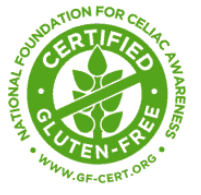
When a U.S. preschool receives federal funding, you can look into getting a 504 Plan for a child with food allergies. This plan will delineate accommodations necessary for your child to receive a Free Appropriate Public Education (FAPE), and will specifically list those items necessary to keep your child with food allergies safe at school.
Even if the school is a private center, as opposed to federally funded, food allergies are very common, and there should be a written plan for a child in place. You will want to review the elements of it thoroughly with the preschool, including who has anaphylaxis training and is authorized to give epinephrine. The Centers for Disease Control (CDC) has created voluntary guidelines for schools, which can be viewed here, with early-care guidelines starting on page 77.
Allergic Living asked educator Gina Mennett Lee, the co-author, along with lawyer Laurel Francoeur, of the Preschool Food Allergy Handbook, for some specific advice for parents with kids of preschool age. Following are her ideas to get the preschool with allergies process started.
How do you begin the preschool process when your child has food allergies?
The first step is to do your due diligence ahead of time. Visit preschools, ask if they have a written food allergy policy and will make food allergy accommodations. Look for policy that reflects best practice and make sure to ask questions.
Mennett Lee says questions should include: Are there individual plans for each child? Are all staff trained to recognize symptoms of reaction? Who is allowed/trained to administer an epinephrine auto-injector? Is there an emergency plan in place? What are the hand-washing protocols after eating? What are the allergen avoidance strategies? Is there any food sharing or lessons that involved food? (There is a full checklist in her handbook.)
 Gina Mennett Lee
Gina Mennett Lee Feel comfortable with the preschool’s food allergy accommodations? What’s next?
Mennett Lee advises requesting a meeting with the pertinent staff – pre-K director, direct teacher, any additional classroom staff, the nurse, if there is one – to create an individual written plan for your child.
She notes that you can seek to get a 504 Plan if the school receives public funding. However, even without a 504 Plan, she says a written plan can always be created.
“I think it is vital not only for this stage, but also because this plan can become the foundation for a 504 Plan when the child enters kindergarten,” says Mennett Lee, a trained school administrator, former teacher and food allergy consultant. “A written plan ensures that everyone understands what is needed to keep the child safe and included.”
What should a written plan include in preschool?
Ensure a plan addresses the needs and food allergy accommodations of your child throughout the day and the various settings within the pre-K. Mennett Lee says these include: snack time, hand-washing after meals and snacks, cleaning of shared toys that may be in a child’s mouth, and considerations about lunchtime food and seating.
She says epinephrine issues need to be addressed clearly, such as where auto-injectors will be kept (preferably in proximity to your child at all times), and who will be responsible for that, plus who is trained to administer it in the event of a severe reaction.
The written plan should also set out the emergency protocol in the event of anaphylaxis: administer epinephrine, call 911, THEN call parent.
Usually considered as well is an allergen-free learning space. “Often eating and learning are in same room, but they still can be kept separate,” notes Mennett Lee.
Related Reading:
Steps to Ensure a Food-Allergic Child is Safely Included at School





